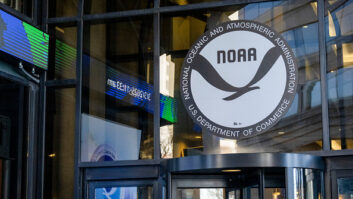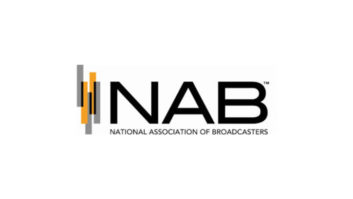Ed Czarnecki is senior director, Strategy & Global Government Affairs, for Monroe Electronics.

The Federal Communications Commission’s Public Safety and Homeland Security Bureau has announced that the next nationwide test of the Emergency Alert System will take place on Sept. 28 at 2:20 p.m. EDT, with a secondary test date of Oct. 5, if needed.
This FAQ is to provide DASDEC users – and anyone else involved in the upcoming national EAS test – with some information on the test, as we understand it at this time.
The FCC announcement of this national test can be found here.
1. What will happen during the Sept. 28 National EAS Test?
On Sept. 28, at 2:20 p.m. ET, FEMA IPAWS system will initiate a nationwide National Primary Test (NPT) message via its IPAWS OPEN CAP system. This test will be the first use of the 000000 national location code, and the NPT will be issued simultaneously, nationwide. Broadcast, cable and IPTV systems are expected to transmit this national test, and the report the results of the test on the FCC’s Electronic Test Reporting System.
2. Will I receive this message via CAP or monitor it via broadcast EAS?
FEMA will originate this message as CAP on its IPAWS OPEN system. Your DASDEC will poll this message from IPAWS OPEN, and retrieve the audio files.
However, because local primary (LP) EAS stations are monitoring and retransmitting this NPT message, it is very possible that your DASDEC will receive a broadcast EAS message before the CAP message is polled from IPAWS. In this case, the broadcast EAS version of the NPT will air instead of the duplicate CAP message.
3. Will the text of the on-screen TV display differ if the NPT is received via CAP or EAS?
Yes, the text of the EAS message — what will be seen on the screen from broadcast TV or cable TV — will be different if it is retrieved from CAP or EAS. If the NPT message source is CAP, then the displayed textual portion of the message will be the full CAP message text (which will match the audio content of the message provided by FEMA). If the NPT message source is conventional broadcast EAS, then the textual display of the message will be the standard EAS sentence.
4. How will this NPT test be different than the FEMA’s regional NPT tests?
The national NPT test will differ from the regional tests in several ways:
● The test will include the national “000000” location code. So FEMA will not be geotargeting this event by state “FIPS” codes, but by the national geocode. Your DASDEC should either be upgraded to version 3.0 software (which automatically configures this location code), or you should manually enter this location code if you are still running earlier versions of software at the time of testing.
● The test is expected by the FCC to broadcast immediately upon receipt, per the FCC’s amended Part 11 rules. This is a feature that is supported in the latest version 3.0 software. If you are running earlier versions of software, you may configure the DASDEC to autoforward the NPT, however it will transmit after the EOM tones are received (if you receive a broadcast EAS NPT before the DASDEC polls for the CAP NPT). With version 3.0, the NPT will begin transmitting immediately upon receipt if the alert is received via CAP or broadcast EAS.
● Participation is mandatory. This September NPT tests falls under the amended FCC Part 11 rules, which makes the NPT a mandatory event.
● The audio from the CAP message will be retrieved differently than in previous FEMA regional NPT tests. If that audio file is unavailable, for whatever reason, the DASDEC will utilize text-to-speech to generate the voice portion of the NPT message.
5. Do I have to upgrade to DASDEC v3.0 for this test?
The choice of whether to upgrade or not is yours, though we strongly recommend upgrading to v3.0 because it supports transmission of the NPT immediately upon receipt, emulating the EAN, as we believe the revised rules call for EAS manufacturers to support. We also recommend upgrading to v3.0 to benefit from the latest improvements in user interface, operation, security, and functionality.
In version 2.6 software, you may add the 000000 geocode, add the NPT event code, and configure the DASDEC to autoforward the NPT. However, v2.6 will not issue the NPT immediately upon receipt, although it will issue the NPT immediately upon capture of the audio message or download of the CAP message.
Version 3.0 automates all the above settings, plus enables the DASDEC to begin transmitting the NPT immediately upon receipt of the message (like the EAN). Version 3.0 is not merely a revision or a bug fix release — it contains substantial changes, completely new features, and an overhaul of many core systems.
6. Do I have to report the results of this test?
Yes, this is truly mandatory, according to the FCC. All EAS Participants must register in the FCC’s Electronic Test Reporting System (ETRS). The ETRS has three “forms” that you must complete. The FCC is using this data to capture and analyze the results of this EAS test. At a recent stakeholders meeting at the FCC’s offices, which we attended, the FCC stressed that completion of these forms was not optional for any broadcaster.
● You must compete ETRS Form One on or before Aug. 26.
● EAS participants must file the “day of test” info in ETRS Form Two at or before 11:59 p.m. ET on Sept. 28. Whether or not the NPT test is received, and whether or not there are any problems with the test, this form must be completed.
● Finally, EAS participants must file the post-test data detailed in ETRS Form Three on or before Nov. 14, (and you can file Forms Two and Three at the same time, if you like).
A public notice was released by the FCC on June 27 containing instructions on how to register. See http://transition.fcc.gov/Daily_Releases/Daily_Business/2016/db0627/DA-16-721A1.pdf. We recommend that you don’t delay in starting the registration process.
The FCC’s ETRS website is here.
Stations can contact the FCC staff at [email protected] for assistance in completing Form One.
7. Is there a “rain date” for the September NPT test?
If FEMA needs to reschedule the September 28 test — or issue a “redo” — for whatever reason, a secondary test date is scheduled for Oct. 5, if necessary. You will need to be prepared to participate in a test on both the primary Sept. 28 and alternate Oct. 5 test dates. Again, participation in this national NPT test is mandatory.
8. How and when did the FCC Rules change for the NPT?
Over a year ago, on June 4, 2015, the FCC released a Sixth Report and Order on EAS that changed the EAS rules in four areas. The FCC (1) adopted the 000000 national location code; (2) adjusted rules governing the a National Periodic Test (NPT) code; and (3) created a requirement that for future nationwide EAS tests, EAS participants must submit test result data electronically.
● New National Location Code: The FCC has adopted “six zeroes” (000000) as the national location code pertaining to every state and county in the United States. The FCC requires EAS Participants to use equipment capable of processing this 000000 location code. As noted above, the DASDEC automatically supports the 000000 location code for version 3.0 users, and requires manually selecting the 000000 location code for version 2.6.
● National Primary Test: The FCC is making the National Periodic Test (NPT) a mandatory event code that must be immediately retransmitted upon receipt. The FCC requires that EAS participants’ equipment must be capable of processing the NPT. Further, the FCC now requires that the NPT code must be retransmitted immediately upon receipt. The FCC, however, has not made any other changes to the NPT code, and it remains limited to two minutes in length. Note: For version 3.0 users, the NPT is automatically enabled, and retransmits immediately upon receipt. For version 2.6 users, the NPT must be enabled as an event code to be automatically forwarded (however, the NPT will autoforward immediately upon capture of the audio message and end-of-message tones, but not immediately upon receipt of the header tones like an EAN).
● Electronic Reporting: As described above, the FCC is requiring EAS participants to file test data in an Electronic Test Report System for recording EAS dissemination data. The FCC will also allow batch or bulk filing of test data, which will be of assistance for operations that file for multiple licensees.
The full text of the FCC’s Sixth Report and Order can be found here.







